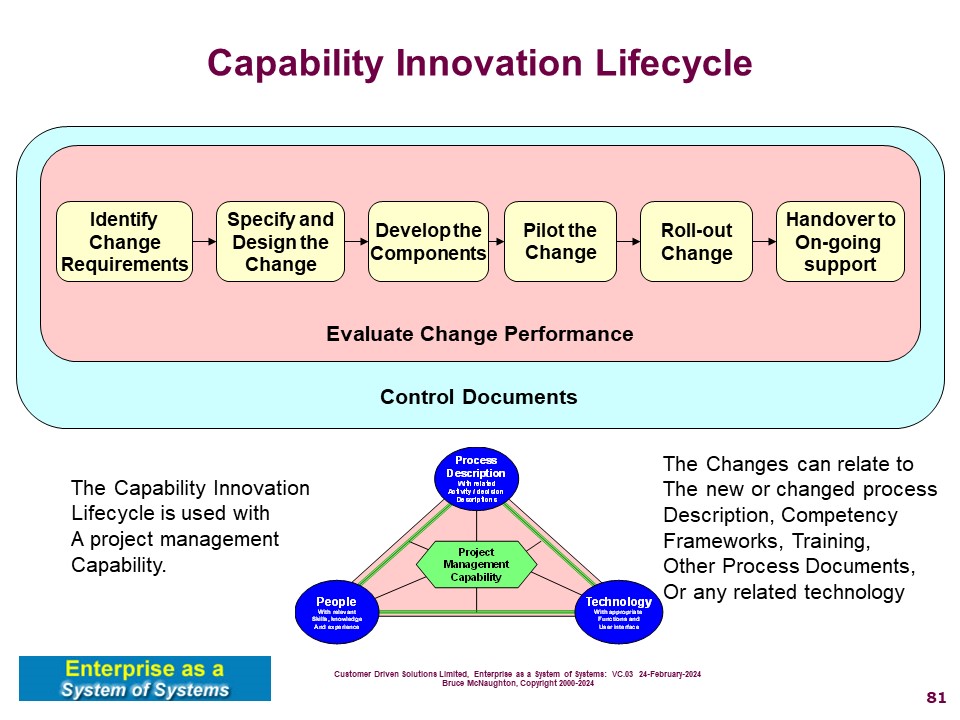Capability Innovation Life cycle
Process Design Pattern
Purpose
The Capability Innovation Life Cycle is a set of activities that translates a set of requirements into an operational capability within an organization. When necessary, the life cycle alwo covers the retirement of a capability. This is not a standalone process but requires a project management process or equivalent to Initiate this life cycle.
See the Project Management.
See the following for additional information.
PDF: System Description: Capability as a System,
Outcomes
Activities

Roles
- Capability Owner (or Process Owner)
- Capability Manager (or Process Manager)
- Practitioner (member of the capability community of practice)
- Process Designer
- Process Developer
- Training Design
- Training Development
- Documentation Manager / Specialist (Knowledge Management).
- Technology Designer
- Technology Developer
- Technology and Training Support
- Capability Assessor / Auditor
Entry Criteria
A need for a new or revised capability has been identified within a capability model and no existing capability team or existing process can be adapted to meet this need. A team has been identified to manage this life cycle.
Objects
- New or updated Process Documentation
- Associated process materials (training, technology, etc.).
- Community of Practice using the capability.
- Capability (roll-out / maintain) Plan
- Process Description (Abstract System).
- Technology information (procurement, development, improvement).
- Capability Team
Process Owner
- Business Architect,
- Quality Manager (ISO 9001)
- or HR (OD)
- with support from Finance.
- Capability Practitioner
References
This process links to the following Best Practice, External Standards and Product Standards. Links to other processes that this process may start are also indicated.
External Standards
ISO 9001:2015 Quality Management Systems: Requirements
Book References
Lean Thinking, James P. Womack and Daniel T. Jones
Business Process Improvement, H. James Harrington
Applying UML and Patterns, Craig Larman
The Great Transition: Using the Seven Disciplines of Enterprise Engineering, James Martin
Initiates